
Probability project and key to use in class comparing theoretical versus experimental probability.
- Subject:
- Mathematics
- Material Type:
- Activity/Lab
- Provider:
- WARREN HILLS REGIONAL DISTRICT OFFICE
- Date Added:
- 07/02/2018

Probability project and key to use in class comparing theoretical versus experimental probability.

Students use the addition rule to calculate the probability of a union of two events. Students interpret probabilities in context.
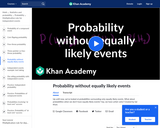
This video goes over the multiplication rule for independent events that are not equally likely.
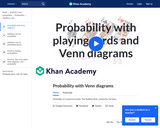
This video goes over probability of compound events and the Addition Rule.

The purpose of this task is to test student skill at converting verbal statements into two algebraic equations and then solving those equations. The student should assign variables to each number, form the system of the two equations, and solve the system. The final step is to add the values found for the two assigned variables. This problem is different from many that students have seen since the two equations are not linear. One way to solve such a system is by substitution: this is presented in the first solution though students might choose a different way to perform the substitution since either of the given equations can be solved for x in terms of y or for y in terms of x. A second solution is presented where the two equations are manipulated in a different way.
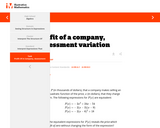
This tasks emphasizes the choice aspect of the full standard, giving students the option of several forms of a quadratic expression to choose from when answering questions about a real-world scenario governed by that expression. The task avoids having the students do the algebraic manipulations themselves, focusing instead on using the structure of the expressions.
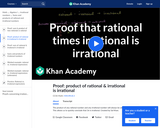
This video shows how the product of any rational number and any irrational number will always be an irrational number.

This video shows how the sum of any rational number and any irrational number will always be an irrational number.
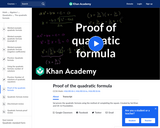
This video covers the proof of the quadratic formula using the method of completing the square.
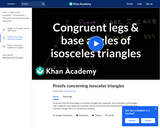
This video proves that the base angles in isosceles triangles are congruent, and conversely, that triangles with congruent base angles are isosceles. It also proves that the perpendicular to the base of an isosceles triangle bisects it.
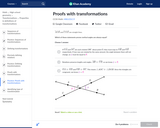
In this Khan Academy activity, students will prove geometric statements using criteria for triangle congruence (ASA, SAS, SSS, HL) to determine whether angle and triangles are congruent.
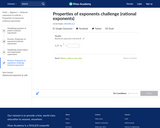
In this Khan Academy activity, students will rewrite expressions as a sum of terms, where each term is in the form k*b^n.
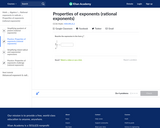
In this Khan Academy activity, students will rewrite expressions with rational exponents into equivalent expressions using the properties of exponents.
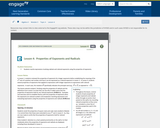
Students rewrite expressions involving radicals and rational exponents using the properties of exponents.
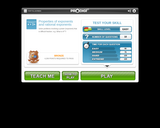
Interactive practice game on the meaning of rational exponents and radicals; the game progresses in difficulty and allow students to review the questions after each round.

Practice worksheet on parabolas and quadratics.

Lesson with practice on performing rigid transformations on triangles.
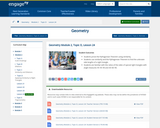
Lesson where students prove the Pythagorean theorem using similarity.
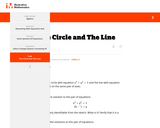
This task tells students to find the solutions to a system of linear and quadratic equations, graphically and algebraically.
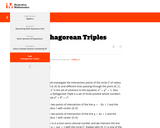
This task has two separate goals: the first is to solve a pair of equations, one quadratic and the other linear. The second goal is to observe that a point, such as (3/5,4/5), that lies on C gives rise to a Pythagorean triple, in this case the triple (3,4,5).